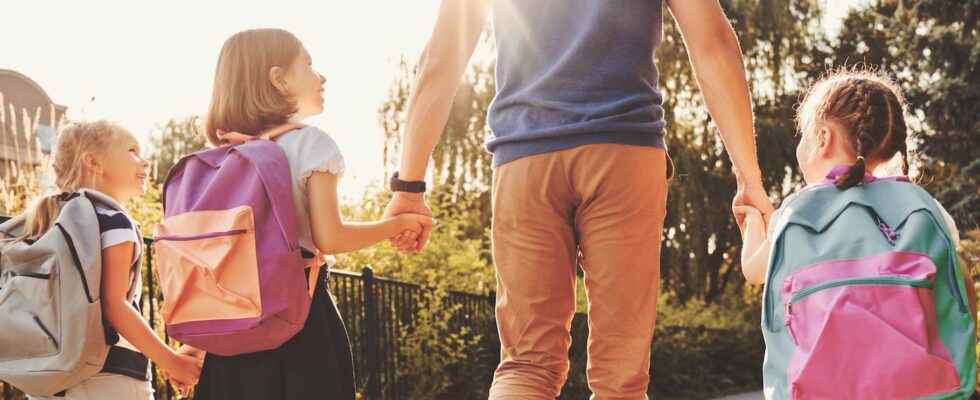On the eve of the start of the school year, it is sometimes difficult to reconcile the expectations of the children with the demands of the teachers and the constraints of the parents. But contrary to what we think a priori, making the choice of an eco-friendly start of the school year could well finally make everyone agree.
You will also be interested
[EN VIDÉO] Nao, the robot that helps children at school Researchers at the Polytechnic School of Lausanne, Switzerland, came up with the idea of using the Nao robot to help children in schools. The android accompanies the toddlers not by becoming their teacher but their pupil. Discover in video the amazing use of this robot.
The start of the school year is generally a pivotal period. In the life of a child, but also in that of his parents. Because going back to school is expensive, in particular. More than 150 euros already, for a return to CP. And until recently, going back to school could also be costly for the planet. But today there are more eco-responsible solutions. Here are some examples.
Betting on the occasion
Among the main expense items for the start of the school year, there is the your child’s schoolbag, and the kit that usually goes with it. However, according to the French Environment and Control Agencyenergy (Ademe), a handbag back in polyester of 3 kg emits, from its manufacture to its disposal, approximately 59 kg of CO2. So to limit its footprint carbon, why not think about getting a second-hand school bag? On an online site or in a garage sale, good opportunities can arise.
Also on the book side, there are now second-hand buying/selling services. Services offered online, but also by some major brands at points of sale physical.
And don’t forget the home recycling. So if you are a little good with your fingers, an old sweatshirt that is too small can easily become a new kit. Ditto for notebook covers in plastic.
Take care of your equipment
On the other hand, if the previous year, you invested in a quality binder – or taught your child to take care of his equipment -, do not hesitate to use it for another year. Even several years. And to convince your child, try the customization that can give him the impression of new.
About the school supplies, the trick also works. Felts that have been carefully sealed after each use should be able to serve at least one more year, for example. A neat notebook with a few blank pages still remaining can, for its part, the following year, be used at least as a draft notebook.
Choose supplies that keep
If plastic has long been attractive, it must be recognized that it has two disadvantages: it can sometimes be fragile and it is not very eco-friendly. So why not opt for scissors, a ruler or pencils made of wood or metal which will last longer? Even from big brothers to little sisters.
Also think about fountain pens and their refillable ink cartridges. And know that there are even today ballpoint pens rechargeable. So an FSC wooden pen should cost you around €0.50 and its refill €0.15. Its classic counterpart in disposable plastic will cost you at least €0.40. A profitable solution from the first refill, therefore.
Choose greener supplies
In parallel with supplies intended to last over time, you also now have the choice of more eco-friendly supplies. Thus starch-based glues – preferably in stick form -, erasers without phthalate neither latexperfume-free pens, markers made from natural dyes, correctors without solventwatercolors rather than acrylic paints, solar-powered calculators or even notebooks bearing, for example, the European Ecolabel or the NF Environnement logo.
Make new habits
Beyond supplies, back to school can be an opportunity to adopt new, more eco-responsible habits. Replace individually packaged snacks with fresh fruit or homemade snacks carried in a snack box, for example. Or opt for a water bottle instead of disposable plastic water bottles.
On the travel side too, it may be time to revise your habits. So, think about the carpooling with other parents. The trick should allow you to save fuel and reduce your ecological footprint while saving time.
And if the school is nearby, why not even start the journey on foot or by bike? A way also to practice a little physical activity and why not, to empower your children when they start to grow up by letting them do the journey alone, or with their friends. But in the meantime, there is also the solution walking bus which allows the little ones to go to school on foot, under the supervision of accompanying parents who, in turn, pick up the children to “drive” them to school.
Interested in what you just read?
